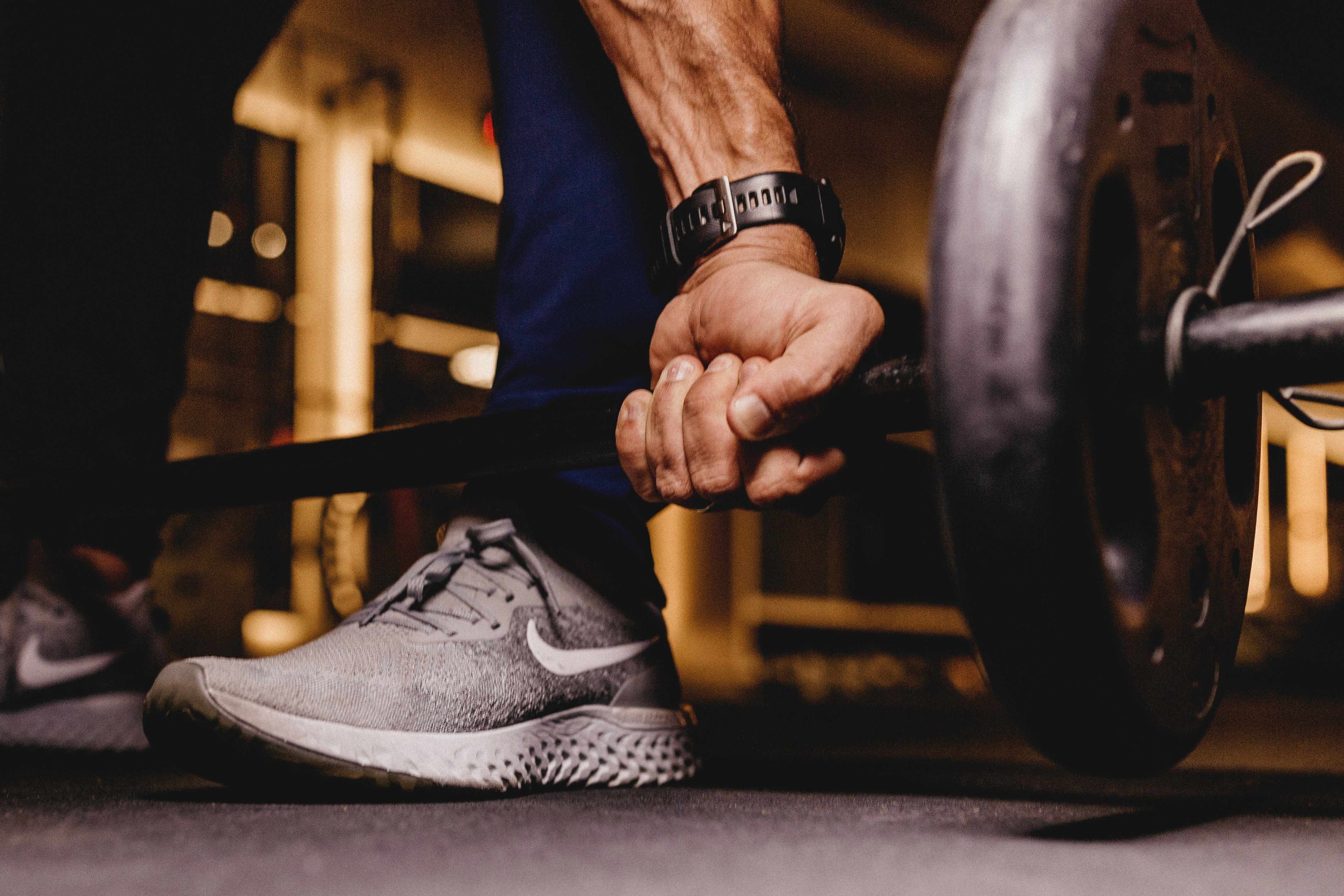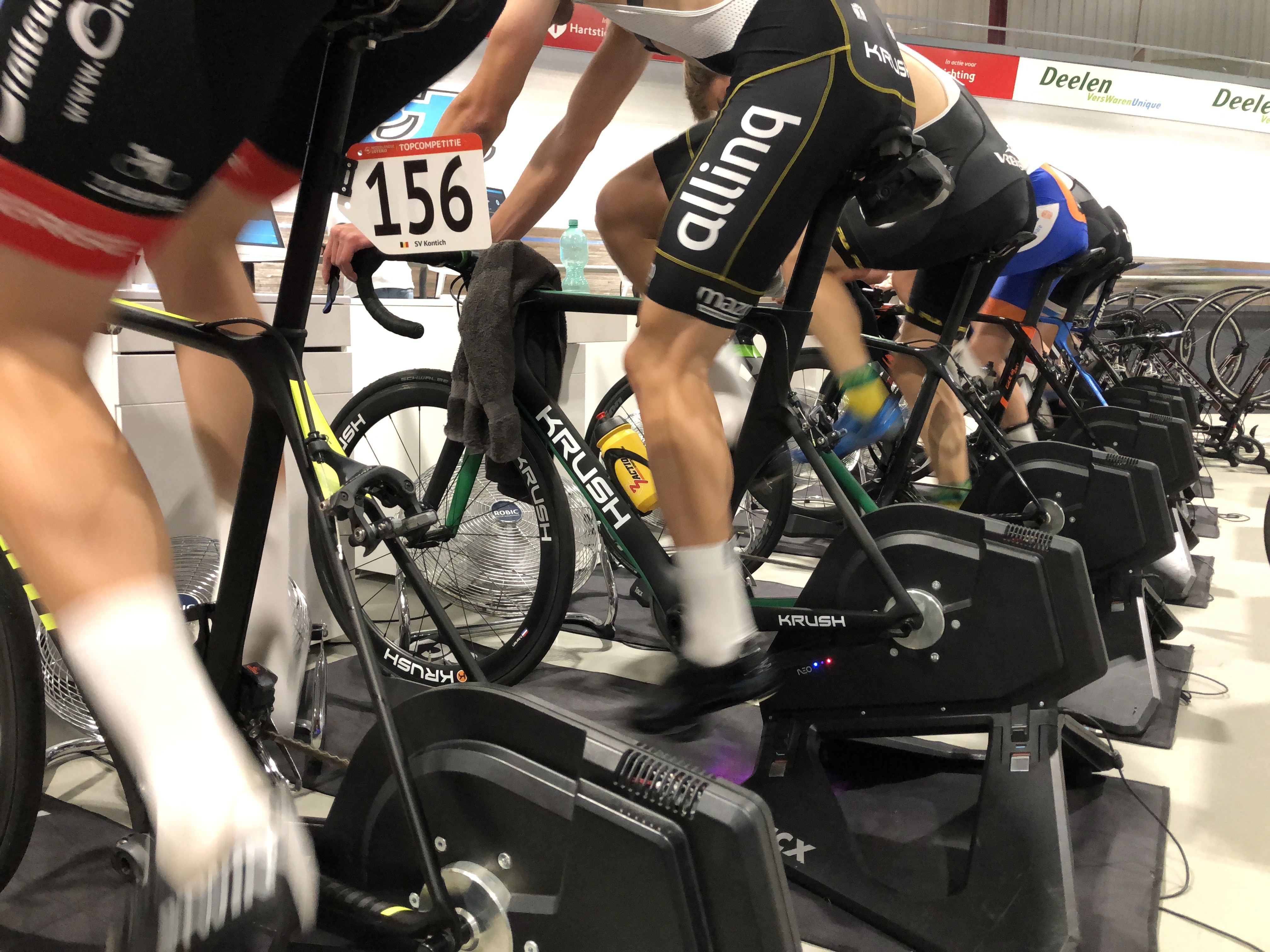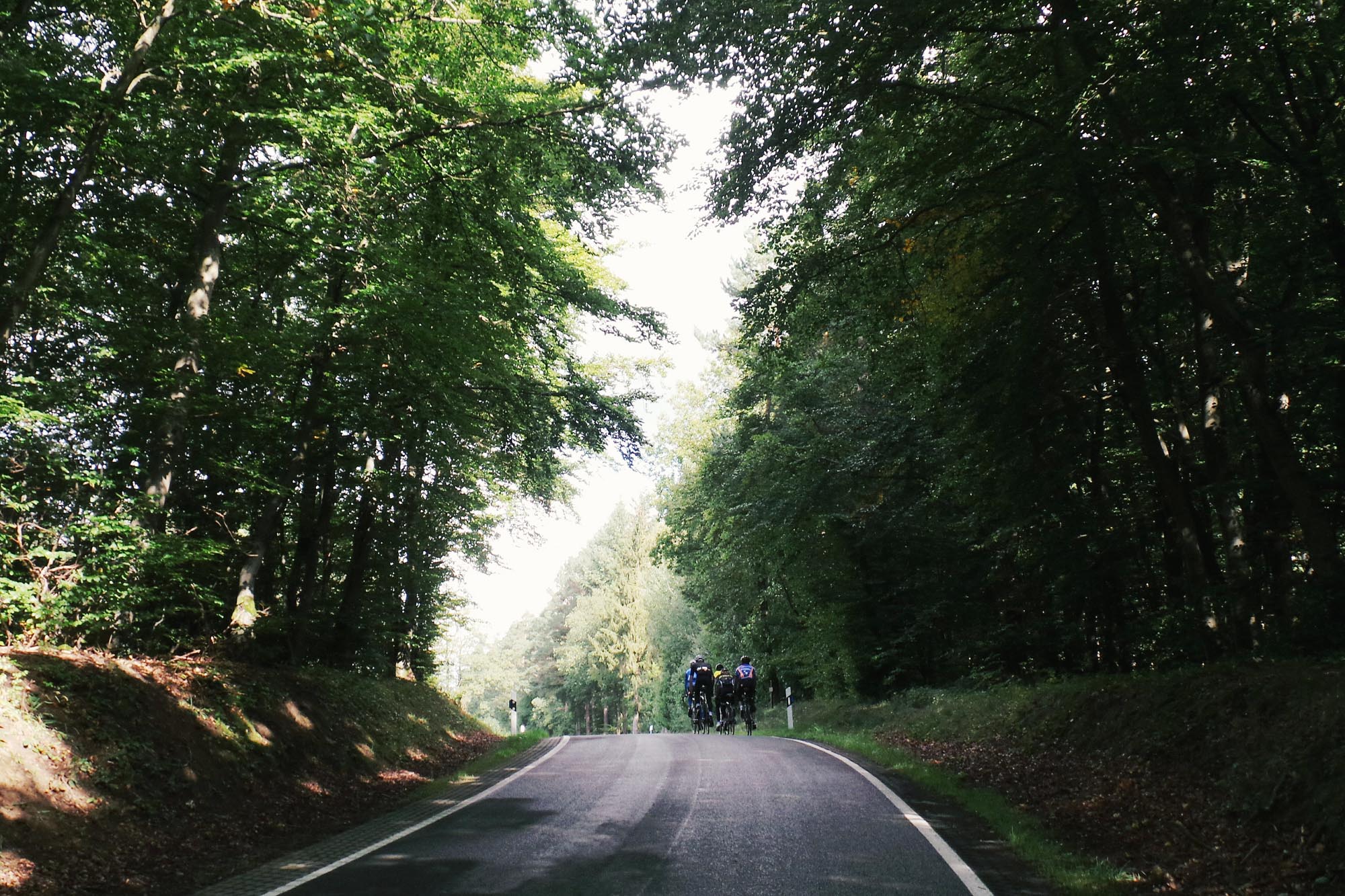What is the best strength training for cyclists?

Sep 15, 2020

What is the best strength training for cyclists?
Sep 15, 2020

What is the best strength training for cyclists?

Sep 15, 2020

Which strength training will make you ride faster?
As a cyclist, do you benefit from strength training and if so, which strength training exactly? This article discusses if strength training can contribute to a better cycling performance. The overview at the end of the article can help you select the best method for you.
Why do you need strength for an endurance sport like cycling?
Cycling is an endurance sport. During training sessions or races long distances are covered, where the average power is relatively low. The aerobic energy system in particular is trained. After a period of training, the capillarity (number of small blood vessels) increases and so does the exchange of oxygen, from blood vessels to muscle. Because the muscles have more oxygen at their disposal, they are able to burn more fats and carbohydrates and thus supply more energy. Strength training increases muscle volume, which hampers the exchange of oxygen between blood vessels and muscles. You could therefore say that intensive strength training goes at the expense of endurance. In addition, an increase in muscle volume results in a higher weight, which is the last thing a cyclist wants.
Most decisive moments in a race require strength.
However, cycling nowadays is much more than only an endurance sport. Races are often decided in a sprint or with a fierce demarrage. Components in which you can excel if you have a decent amount of power. However, strength can also be a limiting factor when riding a long time trial or climb. So strength training definitely makes a meaningful contribution to cycling performance, but the danger lies in the fact that strength training can limit aerobic fitness and increase weight. You can still be such a strong sprinter, but you still have to climb all those mountains to get to Paris and win the sprint on the Champs-Elysées. Searching for the right shape and fine tuning the strength training is therefore crucial for a cyclist.
What muscle fibers does a cyclist need to train?
The human body contains 3 different types of muscle fiber: slow (type-I), fast (type-IIA) and very fast (type-IIB). The type-I fibers can deliver little strength, but can sustain this for a very long time, while the type-IIB fibers can deliver a lot of strength, but can sustain this for a short time. Every human being is born with different proportions of these muscle fibers. For example, sprinters naturally have a lot of type II-B fibers, while endurance athletes naturally have a lot more type-I fibers.
By doing a lot of endurance training, especially the type-IIA, but also the type IIB fibers, can be tuned to type-I fibers. In other words, endurance training makes you limper. To date, no convincing scientific evidence has provided the opposite, the tuning of slow to fast fibers. In order to make the different muscle fiber types stronger, they will also have to be trained in different ways, bearing in mind that improving the properties of one type of fiber may go at the expense of the other. Before a rider starts strength training, he should therefore think carefully about the purpose for this strength training and how his own body is made up.
What strength training can you do for different muscle fiber types?
Type-IIB
These fibers have the property that they can deliver a lot of power, but not for very long. They are mostly used at sprints and short demarrages. Strength training has a lot of effect on this type of muscle fibers. The muscles can deliver much more strength and increase in size (hypertrophy). The downside of this is a negative effect on endurance and a considerable weight gain. A sprinter who wants to survive a hill will therefore have to be careful with this form of strength training.
To make the type-IIB fibers stronger you will have to perform exercises of 3-8 repetitions with as much weight as possible. This requires a lot of strength as well as neuromuscular control. It is therefore impossible to start with this form of strength training immediately, because the strain on tendons and joints can be too high. In addition, the muscles will not be able to cope with such a high load from one day to the next and the chance of muscle damage is also very high.
Type-IIA
The other fast muscle fibers, the type-IIA fibers have not only fast but also slow muscle properties. This means that they can deliver less strength, but can keep this up for longer than type-IIB. It also means that these muscle fiber types are extremely trainable. After a period of endurance training, it is mainly these muscle fibers that acquire slow properties. The type-IIA fibers are mainly recruited during efforts at a sub-maximal level, around the tipping point. Think of efforts like a time trial, a long climb, or forcing a gap between the leading group and the peloton. After a period of strength training, this muscle fiber type becomes stronger and also increases in volume, albeit to a lesser extent than the type-IIB fibers. In order to increase the strength in the type-IIA fibers, the number of repetitions of an exercise will have to be between 12 and 18.
Type I
Finally, the slow, type-I fibers. These fibers are used during prolonged efforts where the power is relatively low. They have little power and provide little energy, but are capable of sustaining an effort for a very long time. Nevertheless, these muscle fibers can also benefit from strength training and become stronger. Strong slow muscle fibers can make all the difference, especially when climbing for long periods of time. Slow muscle fibers can deliver optimum power at around 80 RPM, because the contraction rate of type-I fibers is much slower than that of fast muscle fibers. When riding long climbs, the peak force per pedal stroke becomes so high that the fast muscle fibers will have to be used. By strengthening the slow muscle fibers, they are able to keep supplying energy during climbing, so that the fast muscle fibers can be spared. In order to strengthen the slow muscle fibers, a lot of repetitions will have to be chosen, which means between 20 and 30. But strength training outdoors on a bicycle by riding uphill with a low cadence and high power also works very well to make these muscle fibers stronger.
Which strength training is right for you?
Strength training can make a positive contribution to your cycling performance. However, it is important to choose the right form of strength training, taking into account the characteristics that need to be improved. Depending on what you want to improve you choose the right exercises and the right number of repetitions. The question of whether you can do the exercises with your own weight at home or whether you need a squat rack at the gym also depends on this question. The strength training will have to be as specific as possible. This is precisely why when improving Type-I muscle fibers, strength training on a bicycle is preferable. The muscle groups that are strengthened should be the same and should be trained as much as possible in the same way as on a bicycle.
The best strenght training exercises
The best strenght training exercises at home or in the gym are the squat and step-up. Training with free weights is always preferable to fixed weights, as several muscle groups that take care of coordination and balance are also put to work. Simultaneous training of your core stability is essential. As the beautiful English expression goes: "You can't fire a cannon from a canoe". So avoid exercises like the leg-press. After a period of strength training there is not only an increase in strength, but also a change in the coordination pattern on the bike. Whatever you do, never start strength training too fanatically, but first make sure that you have fully mastered the technique behind the exercises. Then build up the resistance carefully.
Study to strenght training cyclists
Below is a brief overview of various studies for cyclists into different forms of strength training and the degree of improvement in different areas. Maybe this can help you to do the right strength training this winter.
StudySubjectsMethodResearchResultR.C. Hickson8 trained cyclists3 days/week, 10 weeksSquat exercises 80% 1RMInfluence strength trainingon power, short time trial and submax powerLeg strength + 30%
4-8 min + 11%
80% VO2 max-71 to 85 minE.J. Marcinik18 untrained men12 weeks training, 12-15 repetitionsStrength training on LT and endurance+33% at 75% VO2+ 12% LT.B.R. Rønnestad20 trained cyclists12 weeks 3x 4-10 repetitions 2/week5 min all out after 180 min endurance effortFrom 371 to 400 W.J. Bastian et al.14 trained cyclists9 weeks, 30/40 repetitionsEffect on endurance and maximum power.Power output maximized and increased during time trial.Paton and Hopkins18 well trained cyclists5 weeks, 12x 30 min. Jumps with 1 leg and 30 sec. Strength training on bicycle.Replacement of part of endurance training by strength training8.7% more power during a 1-km time trial. 8.1% more power during a 4-km TT.
Which strength training will make you ride faster?
As a cyclist, do you benefit from strength training and if so, which strength training exactly? This article discusses if strength training can contribute to a better cycling performance. The overview at the end of the article can help you select the best method for you.
Why do you need strength for an endurance sport like cycling?
Cycling is an endurance sport. During training sessions or races long distances are covered, where the average power is relatively low. The aerobic energy system in particular is trained. After a period of training, the capillarity (number of small blood vessels) increases and so does the exchange of oxygen, from blood vessels to muscle. Because the muscles have more oxygen at their disposal, they are able to burn more fats and carbohydrates and thus supply more energy. Strength training increases muscle volume, which hampers the exchange of oxygen between blood vessels and muscles. You could therefore say that intensive strength training goes at the expense of endurance. In addition, an increase in muscle volume results in a higher weight, which is the last thing a cyclist wants.
Most decisive moments in a race require strength.
However, cycling nowadays is much more than only an endurance sport. Races are often decided in a sprint or with a fierce demarrage. Components in which you can excel if you have a decent amount of power. However, strength can also be a limiting factor when riding a long time trial or climb. So strength training definitely makes a meaningful contribution to cycling performance, but the danger lies in the fact that strength training can limit aerobic fitness and increase weight. You can still be such a strong sprinter, but you still have to climb all those mountains to get to Paris and win the sprint on the Champs-Elysées. Searching for the right shape and fine tuning the strength training is therefore crucial for a cyclist.
What muscle fibers does a cyclist need to train?
The human body contains 3 different types of muscle fiber: slow (type-I), fast (type-IIA) and very fast (type-IIB). The type-I fibers can deliver little strength, but can sustain this for a very long time, while the type-IIB fibers can deliver a lot of strength, but can sustain this for a short time. Every human being is born with different proportions of these muscle fibers. For example, sprinters naturally have a lot of type II-B fibers, while endurance athletes naturally have a lot more type-I fibers.
By doing a lot of endurance training, especially the type-IIA, but also the type IIB fibers, can be tuned to type-I fibers. In other words, endurance training makes you limper. To date, no convincing scientific evidence has provided the opposite, the tuning of slow to fast fibers. In order to make the different muscle fiber types stronger, they will also have to be trained in different ways, bearing in mind that improving the properties of one type of fiber may go at the expense of the other. Before a rider starts strength training, he should therefore think carefully about the purpose for this strength training and how his own body is made up.
What strength training can you do for different muscle fiber types?
Type-IIB
These fibers have the property that they can deliver a lot of power, but not for very long. They are mostly used at sprints and short demarrages. Strength training has a lot of effect on this type of muscle fibers. The muscles can deliver much more strength and increase in size (hypertrophy). The downside of this is a negative effect on endurance and a considerable weight gain. A sprinter who wants to survive a hill will therefore have to be careful with this form of strength training.
To make the type-IIB fibers stronger you will have to perform exercises of 3-8 repetitions with as much weight as possible. This requires a lot of strength as well as neuromuscular control. It is therefore impossible to start with this form of strength training immediately, because the strain on tendons and joints can be too high. In addition, the muscles will not be able to cope with such a high load from one day to the next and the chance of muscle damage is also very high.
Type-IIA
The other fast muscle fibers, the type-IIA fibers have not only fast but also slow muscle properties. This means that they can deliver less strength, but can keep this up for longer than type-IIB. It also means that these muscle fiber types are extremely trainable. After a period of endurance training, it is mainly these muscle fibers that acquire slow properties. The type-IIA fibers are mainly recruited during efforts at a sub-maximal level, around the tipping point. Think of efforts like a time trial, a long climb, or forcing a gap between the leading group and the peloton. After a period of strength training, this muscle fiber type becomes stronger and also increases in volume, albeit to a lesser extent than the type-IIB fibers. In order to increase the strength in the type-IIA fibers, the number of repetitions of an exercise will have to be between 12 and 18.
Type I
Finally, the slow, type-I fibers. These fibers are used during prolonged efforts where the power is relatively low. They have little power and provide little energy, but are capable of sustaining an effort for a very long time. Nevertheless, these muscle fibers can also benefit from strength training and become stronger. Strong slow muscle fibers can make all the difference, especially when climbing for long periods of time. Slow muscle fibers can deliver optimum power at around 80 RPM, because the contraction rate of type-I fibers is much slower than that of fast muscle fibers. When riding long climbs, the peak force per pedal stroke becomes so high that the fast muscle fibers will have to be used. By strengthening the slow muscle fibers, they are able to keep supplying energy during climbing, so that the fast muscle fibers can be spared. In order to strengthen the slow muscle fibers, a lot of repetitions will have to be chosen, which means between 20 and 30. But strength training outdoors on a bicycle by riding uphill with a low cadence and high power also works very well to make these muscle fibers stronger.
Which strength training is right for you?
Strength training can make a positive contribution to your cycling performance. However, it is important to choose the right form of strength training, taking into account the characteristics that need to be improved. Depending on what you want to improve you choose the right exercises and the right number of repetitions. The question of whether you can do the exercises with your own weight at home or whether you need a squat rack at the gym also depends on this question. The strength training will have to be as specific as possible. This is precisely why when improving Type-I muscle fibers, strength training on a bicycle is preferable. The muscle groups that are strengthened should be the same and should be trained as much as possible in the same way as on a bicycle.
The best strenght training exercises
The best strenght training exercises at home or in the gym are the squat and step-up. Training with free weights is always preferable to fixed weights, as several muscle groups that take care of coordination and balance are also put to work. Simultaneous training of your core stability is essential. As the beautiful English expression goes: "You can't fire a cannon from a canoe". So avoid exercises like the leg-press. After a period of strength training there is not only an increase in strength, but also a change in the coordination pattern on the bike. Whatever you do, never start strength training too fanatically, but first make sure that you have fully mastered the technique behind the exercises. Then build up the resistance carefully.
Study to strenght training cyclists
Below is a brief overview of various studies for cyclists into different forms of strength training and the degree of improvement in different areas. Maybe this can help you to do the right strength training this winter.
StudySubjectsMethodResearchResultR.C. Hickson8 trained cyclists3 days/week, 10 weeksSquat exercises 80% 1RMInfluence strength trainingon power, short time trial and submax powerLeg strength + 30%
4-8 min + 11%
80% VO2 max-71 to 85 minE.J. Marcinik18 untrained men12 weeks training, 12-15 repetitionsStrength training on LT and endurance+33% at 75% VO2+ 12% LT.B.R. Rønnestad20 trained cyclists12 weeks 3x 4-10 repetitions 2/week5 min all out after 180 min endurance effortFrom 371 to 400 W.J. Bastian et al.14 trained cyclists9 weeks, 30/40 repetitionsEffect on endurance and maximum power.Power output maximized and increased during time trial.Paton and Hopkins18 well trained cyclists5 weeks, 12x 30 min. Jumps with 1 leg and 30 sec. Strength training on bicycle.Replacement of part of endurance training by strength training8.7% more power during a 1-km time trial. 8.1% more power during a 4-km TT.
Which strength training will make you ride faster?
As a cyclist, do you benefit from strength training and if so, which strength training exactly? This article discusses if strength training can contribute to a better cycling performance. The overview at the end of the article can help you select the best method for you.
Why do you need strength for an endurance sport like cycling?
Cycling is an endurance sport. During training sessions or races long distances are covered, where the average power is relatively low. The aerobic energy system in particular is trained. After a period of training, the capillarity (number of small blood vessels) increases and so does the exchange of oxygen, from blood vessels to muscle. Because the muscles have more oxygen at their disposal, they are able to burn more fats and carbohydrates and thus supply more energy. Strength training increases muscle volume, which hampers the exchange of oxygen between blood vessels and muscles. You could therefore say that intensive strength training goes at the expense of endurance. In addition, an increase in muscle volume results in a higher weight, which is the last thing a cyclist wants.
Most decisive moments in a race require strength.
However, cycling nowadays is much more than only an endurance sport. Races are often decided in a sprint or with a fierce demarrage. Components in which you can excel if you have a decent amount of power. However, strength can also be a limiting factor when riding a long time trial or climb. So strength training definitely makes a meaningful contribution to cycling performance, but the danger lies in the fact that strength training can limit aerobic fitness and increase weight. You can still be such a strong sprinter, but you still have to climb all those mountains to get to Paris and win the sprint on the Champs-Elysées. Searching for the right shape and fine tuning the strength training is therefore crucial for a cyclist.
What muscle fibers does a cyclist need to train?
The human body contains 3 different types of muscle fiber: slow (type-I), fast (type-IIA) and very fast (type-IIB). The type-I fibers can deliver little strength, but can sustain this for a very long time, while the type-IIB fibers can deliver a lot of strength, but can sustain this for a short time. Every human being is born with different proportions of these muscle fibers. For example, sprinters naturally have a lot of type II-B fibers, while endurance athletes naturally have a lot more type-I fibers.
By doing a lot of endurance training, especially the type-IIA, but also the type IIB fibers, can be tuned to type-I fibers. In other words, endurance training makes you limper. To date, no convincing scientific evidence has provided the opposite, the tuning of slow to fast fibers. In order to make the different muscle fiber types stronger, they will also have to be trained in different ways, bearing in mind that improving the properties of one type of fiber may go at the expense of the other. Before a rider starts strength training, he should therefore think carefully about the purpose for this strength training and how his own body is made up.
What strength training can you do for different muscle fiber types?
Type-IIB
These fibers have the property that they can deliver a lot of power, but not for very long. They are mostly used at sprints and short demarrages. Strength training has a lot of effect on this type of muscle fibers. The muscles can deliver much more strength and increase in size (hypertrophy). The downside of this is a negative effect on endurance and a considerable weight gain. A sprinter who wants to survive a hill will therefore have to be careful with this form of strength training.
To make the type-IIB fibers stronger you will have to perform exercises of 3-8 repetitions with as much weight as possible. This requires a lot of strength as well as neuromuscular control. It is therefore impossible to start with this form of strength training immediately, because the strain on tendons and joints can be too high. In addition, the muscles will not be able to cope with such a high load from one day to the next and the chance of muscle damage is also very high.
Type-IIA
The other fast muscle fibers, the type-IIA fibers have not only fast but also slow muscle properties. This means that they can deliver less strength, but can keep this up for longer than type-IIB. It also means that these muscle fiber types are extremely trainable. After a period of endurance training, it is mainly these muscle fibers that acquire slow properties. The type-IIA fibers are mainly recruited during efforts at a sub-maximal level, around the tipping point. Think of efforts like a time trial, a long climb, or forcing a gap between the leading group and the peloton. After a period of strength training, this muscle fiber type becomes stronger and also increases in volume, albeit to a lesser extent than the type-IIB fibers. In order to increase the strength in the type-IIA fibers, the number of repetitions of an exercise will have to be between 12 and 18.
Type I
Finally, the slow, type-I fibers. These fibers are used during prolonged efforts where the power is relatively low. They have little power and provide little energy, but are capable of sustaining an effort for a very long time. Nevertheless, these muscle fibers can also benefit from strength training and become stronger. Strong slow muscle fibers can make all the difference, especially when climbing for long periods of time. Slow muscle fibers can deliver optimum power at around 80 RPM, because the contraction rate of type-I fibers is much slower than that of fast muscle fibers. When riding long climbs, the peak force per pedal stroke becomes so high that the fast muscle fibers will have to be used. By strengthening the slow muscle fibers, they are able to keep supplying energy during climbing, so that the fast muscle fibers can be spared. In order to strengthen the slow muscle fibers, a lot of repetitions will have to be chosen, which means between 20 and 30. But strength training outdoors on a bicycle by riding uphill with a low cadence and high power also works very well to make these muscle fibers stronger.
Which strength training is right for you?
Strength training can make a positive contribution to your cycling performance. However, it is important to choose the right form of strength training, taking into account the characteristics that need to be improved. Depending on what you want to improve you choose the right exercises and the right number of repetitions. The question of whether you can do the exercises with your own weight at home or whether you need a squat rack at the gym also depends on this question. The strength training will have to be as specific as possible. This is precisely why when improving Type-I muscle fibers, strength training on a bicycle is preferable. The muscle groups that are strengthened should be the same and should be trained as much as possible in the same way as on a bicycle.
The best strenght training exercises
The best strenght training exercises at home or in the gym are the squat and step-up. Training with free weights is always preferable to fixed weights, as several muscle groups that take care of coordination and balance are also put to work. Simultaneous training of your core stability is essential. As the beautiful English expression goes: "You can't fire a cannon from a canoe". So avoid exercises like the leg-press. After a period of strength training there is not only an increase in strength, but also a change in the coordination pattern on the bike. Whatever you do, never start strength training too fanatically, but first make sure that you have fully mastered the technique behind the exercises. Then build up the resistance carefully.
Study to strenght training cyclists
Below is a brief overview of various studies for cyclists into different forms of strength training and the degree of improvement in different areas. Maybe this can help you to do the right strength training this winter.
StudySubjectsMethodResearchResultR.C. Hickson8 trained cyclists3 days/week, 10 weeksSquat exercises 80% 1RMInfluence strength trainingon power, short time trial and submax powerLeg strength + 30%
4-8 min + 11%
80% VO2 max-71 to 85 minE.J. Marcinik18 untrained men12 weeks training, 12-15 repetitionsStrength training on LT and endurance+33% at 75% VO2+ 12% LT.B.R. Rønnestad20 trained cyclists12 weeks 3x 4-10 repetitions 2/week5 min all out after 180 min endurance effortFrom 371 to 400 W.J. Bastian et al.14 trained cyclists9 weeks, 30/40 repetitionsEffect on endurance and maximum power.Power output maximized and increased during time trial.Paton and Hopkins18 well trained cyclists5 weeks, 12x 30 min. Jumps with 1 leg and 30 sec. Strength training on bicycle.Replacement of part of endurance training by strength training8.7% more power during a 1-km time trial. 8.1% more power during a 4-km TT.
More Relevant Articles
Discover valuable training tips to enhance your cycling performance.
More Relevant Articles
Discover valuable training tips to enhance your cycling performance.
More Relevant Articles
Discover valuable training tips to enhance your cycling performance.

Unlock Your Cycling Potential Today
Join thousands of cyclists who have improved their performance with JOIN's training plans.

Unlock Your Cycling Potential Today
Join thousands of cyclists who have improved their performance with JOIN's training plans.
By joining, you agree to our Terms and Conditions and our Privacy Policy.

Unlock Your Cycling Potential Today
Join thousands of cyclists who have improved their performance with JOIN's training plans.
By joining, you agree to our Terms and Conditions and our Privacy Policy.



